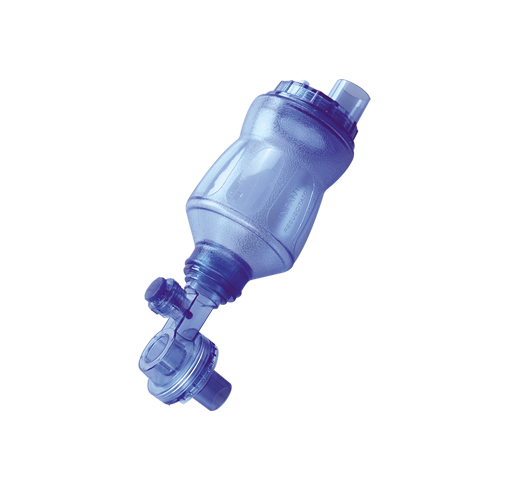-
Эндоскопические продукты и аксессуары
- Эндоскопический набор всасывания & полива
- Инсуффляционные трубки
- Верес Игла
- Высокий поток с подогревом Инсуффлятор трубки
- Эндоскопические клапаны одного назначения
-
Рукава камеры эндоскопа
- Быстросменная драпировка для эндоскопической камеры
- Высокой Четкости Эндоскопическая Камера Драпировка
- Эластомерный конец эндоскопической камеры драпировка
- Кольцо Складной Эндоскопическая Камера Драпировка
- Телескопически сложенный рукав для эндоскопической камеры с быстросменным концом
- Телескопически сложенный рукав для эндоскопической камеры с эластичным концом
- Набор для орошения артроскопии
- Ирригационные трубки
- Полоскать крышки системы
- Щетки для очистки эндоскопического канала
- Ловушка для полипа
-
Дыхательный
- Канюля носовой кислорода
- Маска капнографии
- Маска кислородная
- Non-rebreathing маска
- Маска Вентури
- Мульти-вентиляционная маска
- Небулайзерная маска
- Небулайзер с мундштуком
- Трахеостомическая маска
- Одноразовые Ezscope™Про Брончо
- Мундштук с односторонним клапаном
- Зажим носа
- Комплект для мундштука и фильтра ABC
- Дыхательный тренажер
-
Закрытый всасывающий катетер
- 24H B-образный двойной поворотный закрытый всасывающий катетер
- 24H B-образный тракционный Т-образный закрытый всасывающий катетер
- 24H Pedi Y Разъем Закрытый всасывающий катетер
- 72H K-образный двойной поворотный закрытый всасывающий катетер
- 72H K-образный тракционный Т-образный закрытый всасывающий катетер
- Мульти-портовый закрытый всасывающий катетер
- Катетер всасывания
- Вакуумный клапан управления слизью
- Ловушка для образцов слизи
- Экстрактор слизи
- Экстрактор слизи с защитной оболочкой
- Одноразовые аспирационные трубки
- Анестезия
-
Управление дыхательных путей
- Ротоглоточные дыхательные пути
- Нософарингеальный дыхательных путей
-
Гортанная маска Дыхательных путей
- Стандартная авиалиния маски ПВК Ларынгеал
- Усиленная авиалиния маски ПВК ларынгеал
- Авиалиния маски ПВК 90 градусов ларингеал
- Авиалиния маски стандартного силикона ларынгеал
- Усиленная авиалиния маски силикона ларингеал
- Многоразовая ларингеальная маска Авиалинии
- Многоразовая усиленная ларингеальная маска для дыхательных путей
-
Трахеостомическая трубка
- Небесная регулируемая трахеостомическая трубка
- Небесная трубка трахестомии с неовсасыванием
- Небесная усиленная трахестомическая трубка
- Безмятежность трахеостомия трубки
- Комплект трахеостомии Serenity
- Трахеостомическая трубка Serenity с NeoSuction
- Комплект трубок для трахеостомии Serenity с неовсасыванием
- Grasmere Фенестрированная трахеостомическая трубка
- Комплект фенестрированных трахеостомические трубки Grasmere
- Лазурная не регулируемая трахеостомическая трубка
- S-типа трахеостомическая трубка
- Педи трахеостомия трубка
- Эндотрахеальная трубка
- Интродизер эндотрахеальной трубки
- Интубирующий стилет
-
Всасывающая хирургия
- Гибкая прозрачная ручка Yankauer
-
Ручка Янкауэр
- Ручка SpeedFlow Янкауэра
- Обычный Тип Янкауэр
- Фланцевый наконечник Янкауэр
- Конический наконечник Янкауэр
- Включение/выключение Yankauer с простым наконечником
- Включение/выключение Yankauer с коническим наконечником
- Наконечник лампы Янкауэр
- Корона Тип Янкауэр
- Гибкая ручка всасывания пула
- Ручка CH30 Yankauer и всасывающая соединительная трубка CH35
- Две части простой наконечник Yankauer
- Утка-клюв Тип Янкауэр
- Ручка всасывания пула
- ENT всасывающая трубка
- Всасывающий зонд
- Ортопедические/Ортопедические Янкауэр
- Наконечник аспиратора хирургический
- Всасывающая соединительная трубка
- Всасывания Канистра Мягкий Вкладыш
- Жесткая канистра всасывания
- Всасывающая канистра с комплектом фильтров
- Многоразовые Наружная Канистра
- Вакуумная система дренажа ран
- Геморрой Бандажного Лигатора
- Коннектор
- Адаптер контроля вакуума
- Кардиоторакальная хирургия
- Лапароскопические изделия и аксессуары
- Гинекология
-
Урология
- Катвантаж™Портативный гидрофильный прерывистый катетер
-
Набор для орошения Cysto/мочевого пузыря
- Набор для орошения мочевого пузыря M-easy
- B-цилиндрический набор для орошения мочевого пузыря
- Набор для орошения мочевого пузыря S-tur
- S-uni набор для орошения мочевого пузыря
- Набор для орошения мочевого пузыря B-uro
- Premi мочевого пузыря орошения набор
- J-насос для орошения мочевого пузыря
- Набор для орошения мочевого пузыря J-tur
- Набор для орошения мочевого пузыря H-pump
- Sup-поток мочевого пузыря орошения набор
- Кленовый набор для орошения
- Пион Орошение Набор
- Катетер Нелатон
- Мочевой дренаж мешок
- Мочевой дренаж ног мешок
- Наборы клизмы
- Sitz Ванна Наборы
- Щелкните контейнер образца уплотнения
- Силиконовый мужской катетер
- Кран катетер и адаптер
- Три-способ остановить петух
- Набор для орошения сандалового дерева
- Набор для орошения фрезии
- Набор для орошения нарцисс
-
Общая хирургия
- Система распылителя перфузии
- Желудочный поддон трубы
- Гемостатический порошок аппликатор
- Магнитная драпировка
- Хирургический иммобилайзер руки
- Администрирование Набор для крови
- Набор для орошения зубов
- Ухо/Язвы шприц
- Лампа ирригационный шприц
- Ирригационный шприц Туми
- Шприц ирригации зубов
- Декантирование устройство
- Смешивание канюли
- Устройство распыления слизи
- Лайнер бассейна/Драпировка бассейна
- Крышка ручки камеры
- Легкая крышка ручки
- Медицинская щетка
- Губка Стик
- Шовный ретривер
- Счетчик игл
- Одноразовая калибровочная трубка
- Инфузор давления
- Гепарин Кап
- Крышка защиты
- Шприц для орошения лампой 100 мл
- Склеральный маркер
- Хирургическая легкая ручка
- Энтеральное питание
- Прочное медицинское оборудование
- Средства индивидуальной защиты
- COVID-19 Продукты
- PVC-FREE Медицинское устройство
- Департамент E.N.T
- Решения управления температурой
- Эксплуатация
- Система обработки пациентов
- Аварийный
-
-
 БОЛЬНИЦЫ 2024Apr 28 , 2024
БОЛЬНИЦЫ 2024Apr 28 , 2024 -
-
-
Ручной реаниматор
Ручной реаниматор-это устройство, которое использует положительное давление для надувания легких бессознательного человека, который не дышит, чтобы сохранить их насыщенными кислородом и живыми. Наш ручной реаниматор предназначен для обеспечения эффективной дыхательной помощи и комфорта пациента. Его простая и безопасная конструкция делает его желательным для использования в острых ситуациях.
Тип ручного реаниматора
What is a Manual Resuscitator Used For?
Manual resuscitators, also known as bag valve masks (BVMs), play a critical role in emergency medicine and patient care. They are essential tools used for providing ventilation to individuals who are not breathing or are not breathing adequately. The primary purpose of a manual resuscitator is to ensure that oxygen is delivered to the lungs of a patient in situations where natural breathing is compromised.
1.Emergency Respiratory Support: In cases of respiratory arrest or failure, manual resuscitators are used to manually pump oxygen into the patient's lungs. This is crucial in emergency settings, such as cardiac arrests, drownings, drug overdoses, or any situation where a patient's breathing is inadequate.
2.Pre-Hospital Care: Paramedics and emergency medical technicians commonly use manual resuscitators in pre-hospital settings. They are a key component of emergency response equipment in ambulances, providing a lifeline to patients while they are transported to medical facilities.
3.Anesthesia and Surgery: In surgical settings, manual resuscitators are used during anesthesia, especially in situations where mechanical ventilators are not available or suitable. They provide a controlled delivery of oxygen and anesthetic gases to patients under sedation.
4.Neonatal and Pediatric Use: In neonatal and pediatric care, manual resuscitators are used for newborns and children who require respiratory support. These resuscitators are specially designed to meet the delicate and precise requirements of young patients.
5.Supplemental Oxygen Delivery: Besides providing ventilation, manual resuscitators can also be used to deliver supplemental oxygen to patients who can breathe independently but need additional oxygen support due to conditions like Chronic Obstructive Pulmonary Disease (COPD) or severe asthma.
In essence, manual resuscitators are versatile and life-saving devices in various medical scenarios. Their ability to provide immediate respiratory support makes them indispensable in both emergency and planned medical procedures.
Exploring the Unique Features of GCmedica PVC and Silicone Resuscitators
In the realm of emergency medical equipment, the quality, design, and functionality of resuscitators are paramount. GCmedica has set a new standard in this field with its innovative PVC and Silicone resuscitators, designed to meet and exceed the demands of medical professionals in various emergency scenarios.
1.Material Quality and Durability: The GCmedica resuscitators are made from high-grade PVC and Silicone, materials known for their durability and flexibility. These materials ensure the resuscitators can withstand the rigors of repeated use in high-stress environments. The resilience of these materials also contributes to their longevity, making them a cost-effective option for medical facilities.
2.Ergonomic Design: Understanding the critical nature of ease of use in emergency situations, GCmedica has meticulously designed these resuscitators with ergonomics in mind. The design facilitates easy handling and operation, reducing fatigue for medical professionals during prolonged use. This ergonomic focus extends to all aspects of the resuscitator, including the mask, bag, and valves, ensuring efficient and effective ventilation with minimal effort.
3.Enhanced User Experience: The user experience is significantly enhanced by features like the transparent mask, which allows for better patient monitoring. The tactile and visual feedback is crucial in emergency scenarios. Additionally, the soft yet sturdy bag provides a reliable feel, ensuring precise control over ventilation.
4.Compliance with Safety Standards: Safety is a non-negotiable aspect of medical device manufacturing, and GCmedica resuscitators comply with all relevant safety standards. This compliance assures healthcare providers of the device's reliability and effectiveness in critical care situations.
5.Specific Attributes for Enhanced Performance: GCmedica has incorporated various attributes to boost the performance of their resuscitators. For instance, the valve design is optimized for smooth operation and efficient air flow, minimizing the risk of airway pressure buildup. The resuscitators are also adaptable for use with oxygen reservoirs, enhancing their functionality in different medical situations.
These unique features make GCmedica's PVC and Silicone resuscitators not just tools but lifelines in emergency medical care. Their design and functionality reflect a deep understanding of the challenges faced in emergency scenarios, offering solutions that are both innovative and practical.
FAQs About Manual Resuscitators
Q1:How does a manual resuscitator work?
A1:A manual resuscitator, or bag valve mask, is a handheld device used to provide positive pressure ventilation to patients who are not breathing or breathing insufficiently. The device consists of a self-inflating bag, a one-way valve, and a mask. When the bag is squeezed, air (or oxygen from an attached supply) is forced through the valve and into the patient's lungs. When the bag is released, it reinflates automatically, drawing in air or oxygen for the next breath.
Q2:What are the hazards of manual resuscitators?
A2:While manual resuscitators are critical in emergency care, they carry potential hazards if not used correctly. These include the risk of overinflating the lungs, which can lead to barotrauma or volutrauma. Inadequate ventilation can occur if the bag is not squeezed properly. There's also the risk of gastric insufflation, where air is forced into the stomach, potentially leading to vomiting and aspiration.
Q3:What are the benefits of using a manual resuscitator?
A3:Manual resuscitators provide immediate respiratory support in emergency situations where mechanical ventilation is not available. They are portable, do not require electricity, and can be used in various settings, from hospitals to remote locations. These devices allow for controlled oxygen delivery and are adaptable to patients of different ages and sizes, making them versatile tools in emergency care.
Q4:How many liters of oxygen does a manual resuscitator use?
A4:The amount of oxygen a manual resuscitator uses depends on the bag size and the oxygen supply settings. Adult resuscitators typically have a bag volume of about 1,000 to 1,600 milliliters and can deliver from 500 to 800 milliliters of air (or oxygen) per breath. When connected to an oxygen supply, the device can deliver concentrations of 90% to 100% oxygen, typically at a flow rate of 10 to 15 liters per minute.




 +
+